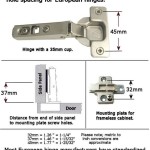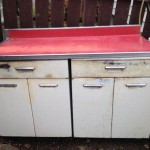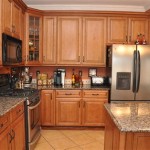Essential Aspects of Cleaning Greasy Kitchen Cabinet Doors
Kitchen cabinet doors, particularly those nearest to the stove or oven, often face the brunt of grease splatters and cooking residue. These greasy stains can not only be unsightly but also make the doors sticky and unpleasant to touch. Cleaning greasy kitchen cabinet doors effectively can restore their pristine appearance and improve overall kitchen hygiene while ensuring the longevity of your cabinets.
Understanding the Types of Grease
It is crucial to understand the type of grease you are dealing with to choose the most suitable cleaning method. Grease can be broadly classified into two categories:
- Organic Grease: Derived from natural sources like cooking oil, butter, or animal fats, organic grease is typically easier to remove.
- Mineral Grease: Found in machine lubricants or car grease, mineral grease is more difficult to remove and may require specialized cleaning agents.
Choosing the Right Cleaning Solution
The effectiveness of your cleaning efforts depends on selecting the appropriate cleaning solution. Consider the following options:
- Dish Soap: For light grease stains, a mild dish soap can be sufficient. Mix a few drops with warm water and apply to the greasy surface.
- Degreaser: Commercial degreasers are specially formulated to dissolve grease effectively. Use them according to the manufacturer's instructions.
- Baking Soda: A natural degreaser, baking soda can be made into a paste with water. Apply the paste to the grease and let it sit for several minutes before wiping it off.
Cleaning Techniques
Once you have chosen the cleaning solution, follow these steps for effective cleaning:
- Remove loose grease: Wipe away any excess grease or food particles using a damp cloth or paper towels.
- Apply cleaning solution: Apply the chosen cleaning solution to the greasy area and allow it to penetrate the grease for a few minutes.
- Scrub gently: Use a soft sponge or microfiber cloth to gently scrub the surface in circular motions. Avoid using abrasive scrubbers or scouring pads, as they can damage the cabinet finish.
- Rinse: Rinse the cabinet door thoroughly with clean water to remove the cleaning solution and grease residue.
- Dry: Use a clean cloth or towel to dry the cabinet door completely to prevent water stains.
- Use a range hood or fan: Proper ventilation can help remove grease from the air before it settles on cabinet doors.
- Cover pots and pans: While cooking, keep pots and pans covered to prevent grease from splattering.
- Wipe down surfaces regularly: A quick wipe-down after cooking can prevent grease from hardening and becoming more difficult to remove later.
- Avoid using harsh chemicals: Harsh chemicals can damage cabinet finishes, so stick to mild cleaning solutions specifically designed for kitchen surfaces.
Preventive Measures
Regular cleaning is essential, but preventive measures can help minimize grease buildup in the future:
Conclusion
Cleaning greasy kitchen cabinet doors is essential for maintaining a clean and inviting kitchen space. By understanding the type of grease you are dealing with, choosing the right cleaning solution, and following proper techniques, you can effectively remove grease stains and restore the appearance of your cabinets. Preventive measures can help minimize future grease buildup, ensuring that your kitchen remains pristine for longer.

How To Clean Sticky Grease Off Kitchen Cabinets Ovenclean

How To Clean Kitchen Cabinets In A Few Easy Steps Hunker Cleaners Homemade House Cleaning Tips

Get Grease Off Kitchen Cabinets Easy And Naturally

How To Clean Kitchen Cabinets Everyday Skate

How To Clean Grimy Kitchen Cabinets With 2 Ingredients

How To Clean Kitchen Cabinet Doors

Best Ways To Clean Grease Stains Off Kitchen Cabinets

How To Remove Grease From Kitchen Cabinets 3 Methods Bob Vila

How To Clean White Kitchen Cabinets 3 Best Ways Avoid Abbotts At Home

Degrease Kitchen Cabinets With An All Natural Homemade Cleaner








